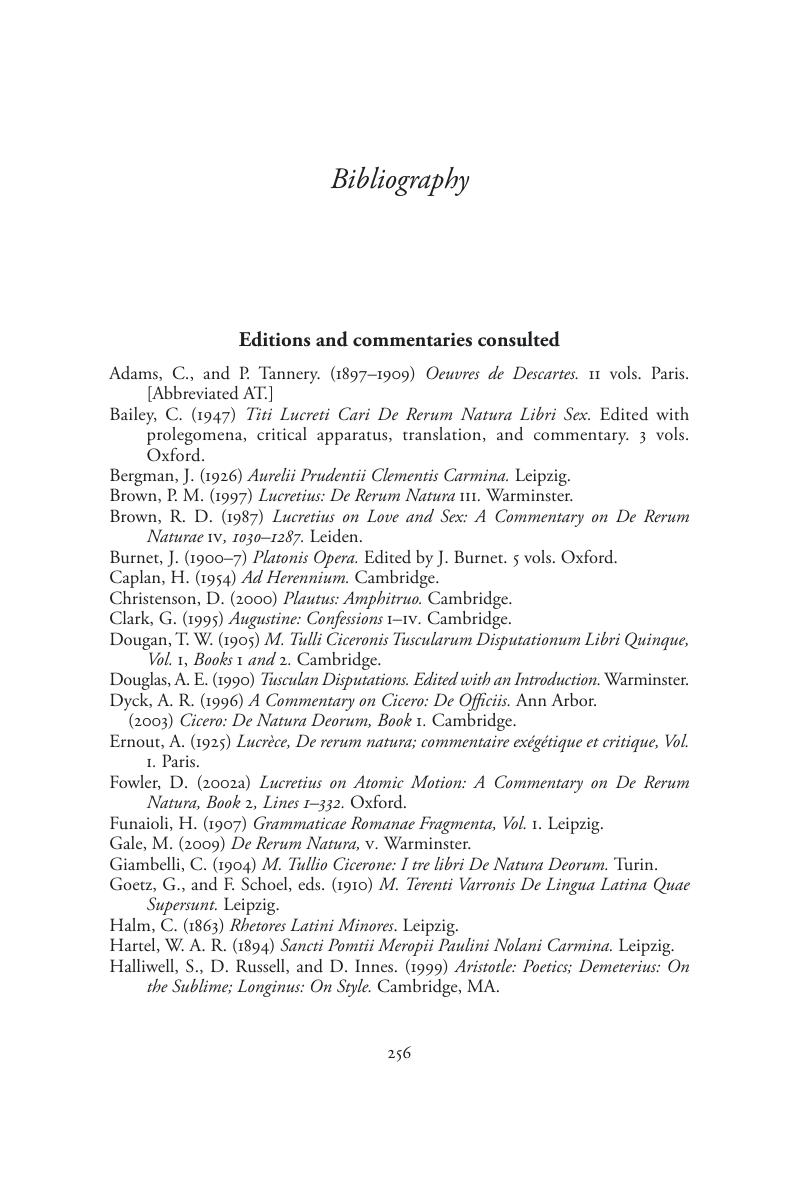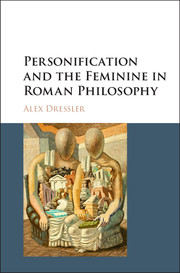Book contents
- Personification and the Feminine in Roman Philosophy
- Personification and the Feminine in Roman Philosophy
- Copyright page
- Dedication
- Contents
- Book part
- Glossary
- Introduction
- Chapter 1 Love, literature, and philosophy
- Chapter 2 The subjects of personification and personhood
- Chapter 3 Mothers, sons, and metaphysics: others’ agency and self-identity in the Roman Stoic notion of a person
- Chapter 4 Girl behind the woman: Cicero and Tullia, Lucretius and the life of the body-mind
- Chapter 5 Embodied persons and bodies personified: the phenomenology of perspectives in Seneca, Ep. 121
- Chapter 6 Nature’s property in On Duties 1: the feminine communism of Cicero’s radical aesthetics
- Conclusion: repairing the text
- Bibliography
- General index
- Index locorum
- References
Bibliography
Published online by Cambridge University Press: 05 August 2016
- Personification and the Feminine in Roman Philosophy
- Personification and the Feminine in Roman Philosophy
- Copyright page
- Dedication
- Contents
- Book part
- Glossary
- Introduction
- Chapter 1 Love, literature, and philosophy
- Chapter 2 The subjects of personification and personhood
- Chapter 3 Mothers, sons, and metaphysics: others’ agency and self-identity in the Roman Stoic notion of a person
- Chapter 4 Girl behind the woman: Cicero and Tullia, Lucretius and the life of the body-mind
- Chapter 5 Embodied persons and bodies personified: the phenomenology of perspectives in Seneca, Ep. 121
- Chapter 6 Nature’s property in On Duties 1: the feminine communism of Cicero’s radical aesthetics
- Conclusion: repairing the text
- Bibliography
- General index
- Index locorum
- References
Summary

- Type
- Chapter
- Information
- Personification and the Feminine in Roman Philosophy , pp. 256 - 293Publisher: Cambridge University PressPrint publication year: 2016



